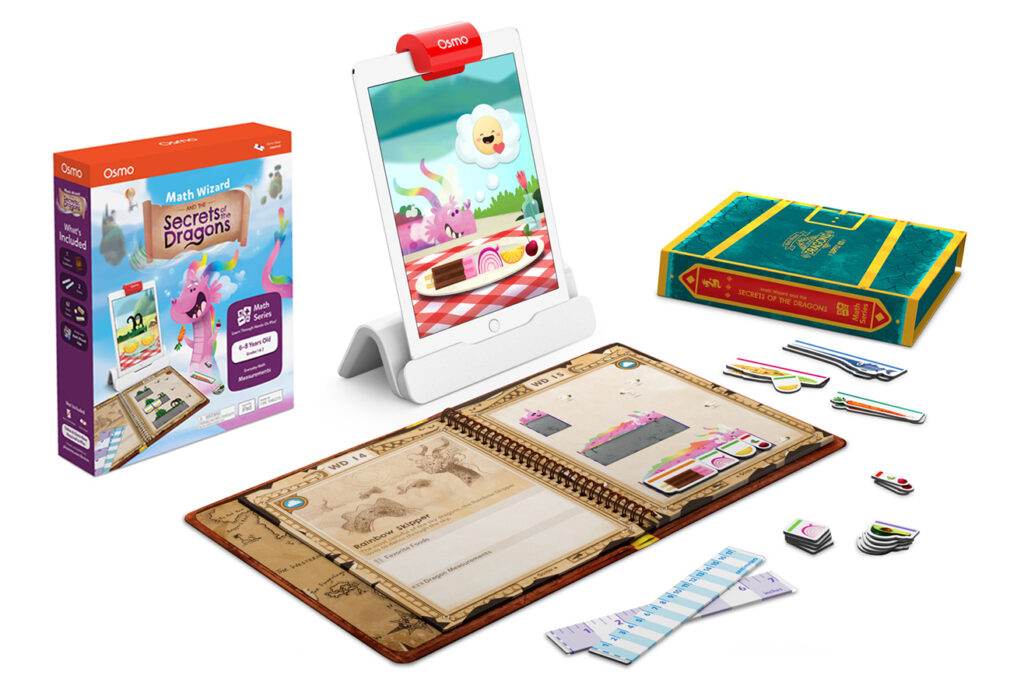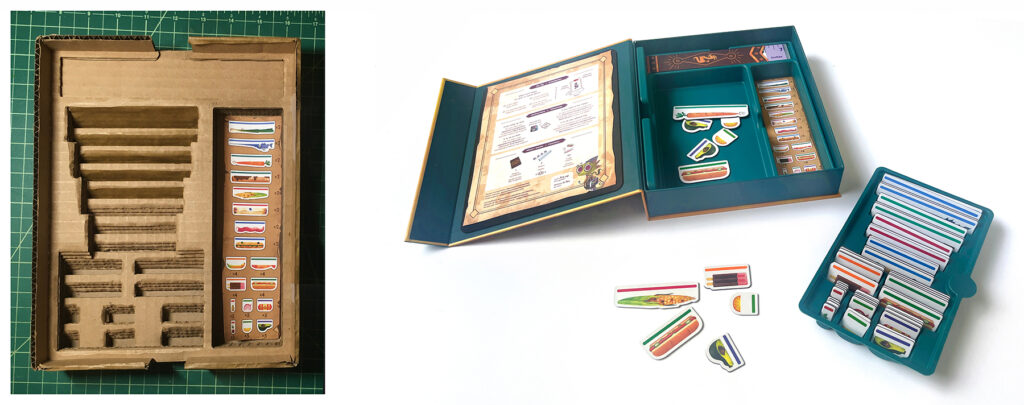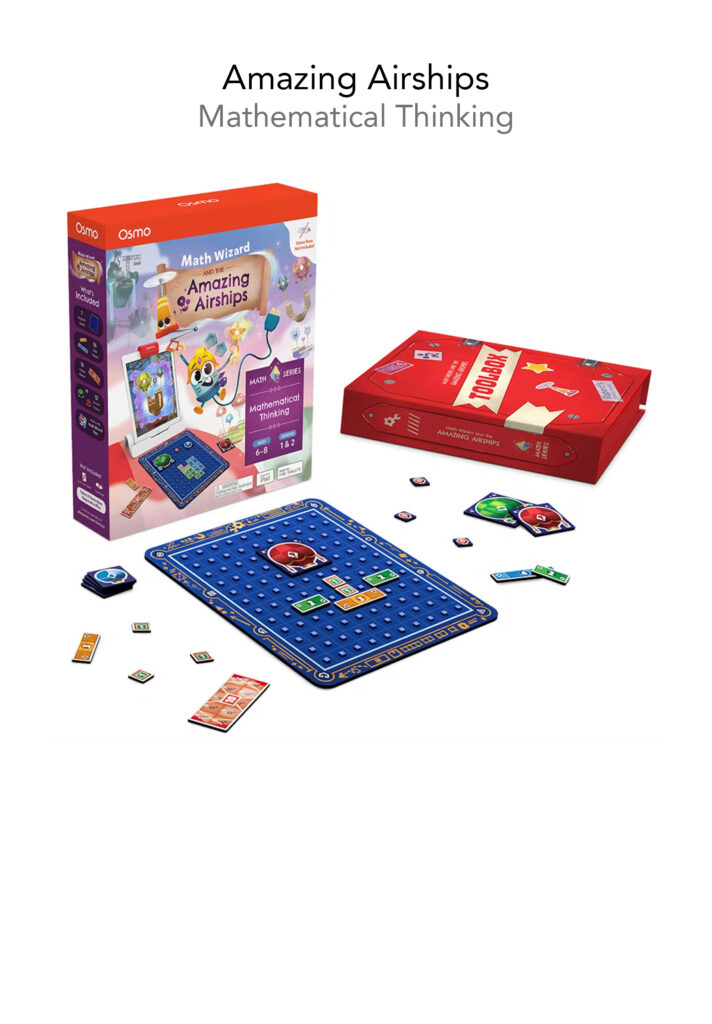
Secrets of the Dragons is a game that teaches measurements using standard and non standard units. Players raise dragons by feeding them with different length foods and measuring the dragon’s growth.

Key hardware features
- Guidebook: A binder featuring all the dragons, with dedicated sections to measure, feed, and take notes. Made from spiral bound paper with a paper wrapped cover.
- Rulers: Uses standard units to measure the different dragon lengths. To submit the answer the child points to the number on the ruler. Made from PP sheet with matte UV printing.
- Food Tiles: Uses non standard units to measure, compare, and estimate the length of the dragons. Made from 1.7mm die cut matte laminated black core board.
Prototyping process
A key part of this game was measuring. We conducted many rounds of playtesting to understand how kids use rulers. A common challenge we ran into was that our testers had trouble understanding how to align the ruler with the beginning of the object. After multiple iterations, we created a ruler with a transparent edge and perforated “start” line that helped them align the ruler to the measured object.

Another insight our playtesting research revealed was that some kids enjoyed organizing their game pieces, while others preferred to mix them together. The game had over 60+ game tiles, 18 of which were unique shapes. To accommodate the two types of play behavior, I designed a dual storage system. The final game box included both an organization tray and a catchall cavity.

Photos: Packaging prototype (L), Final game packaging (R)
Challenges
The primary challenge on this project was to produce a partially clear matte ruler with printing that is opaque and matte enough to minimize glare for computer recognition. The initial iterations faced manufacturing issues such as paint adhesion, printing opacity, and material reflectivity. Through iterating and collaborating with the factory, we were able to produce a custom process of layering UV printed PP sheets. This approach allowed us to build up the print opacity, seal in the printing, and apply a matte finish.

Another challenge we ran into was related to printing consistency: in each production batch, a new batch of printing inks had to be mixed. For the game to reliably detect the ruler, we had to ensure that the color contrast and values between each batch was minimal. After researching color tolerance techniques, we adopted the use of a color measuring device and implemented a requirement for each future batch to be produced within a delta of 2 for each LAB color space value.

Photos: Visual contrast test (L) LAB Color measuring device (R)
Summary
This was the second game in the math wizard series. Since the success of this game heavily depended on the hardware detection, I focused on pushing the vendors to uphold a tight tolerance and established a re-order QA criteria that would ensure consistency for future production runs.
Check out another project in the same Math Wizard series:

Creatively solved product issues by leveraging knowledge of paper manufacturing processes to produce quality game pieces.
